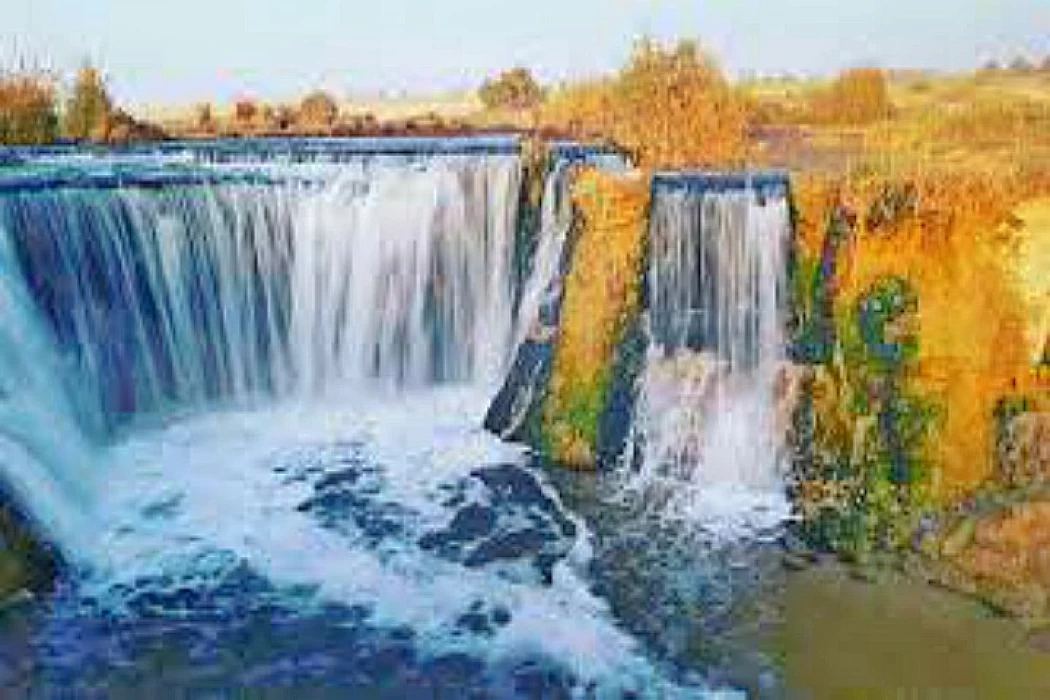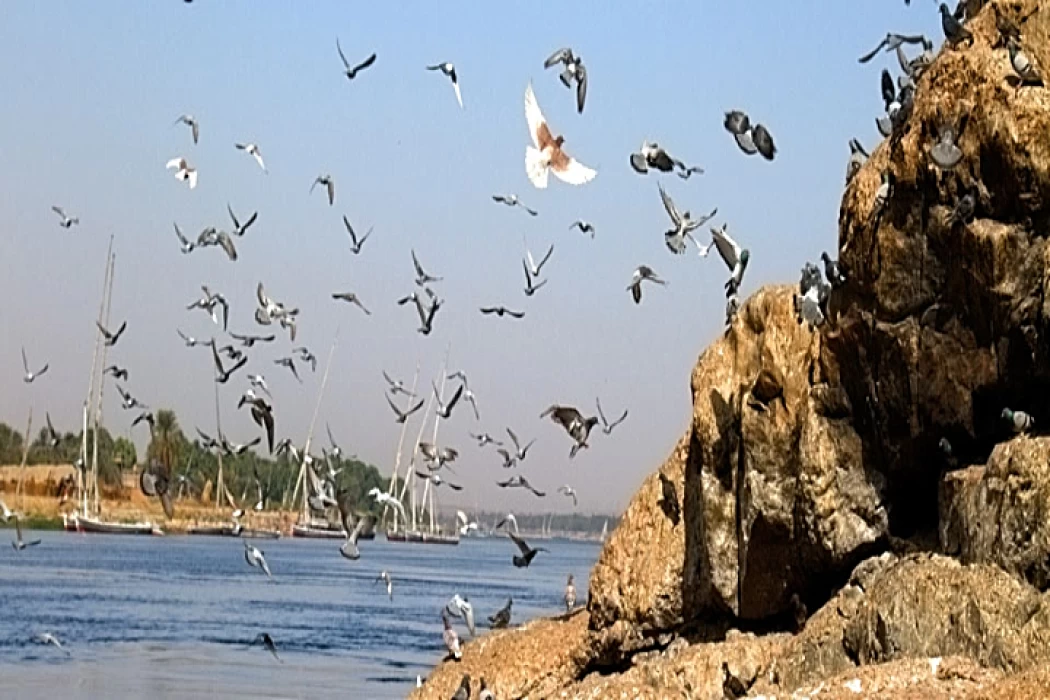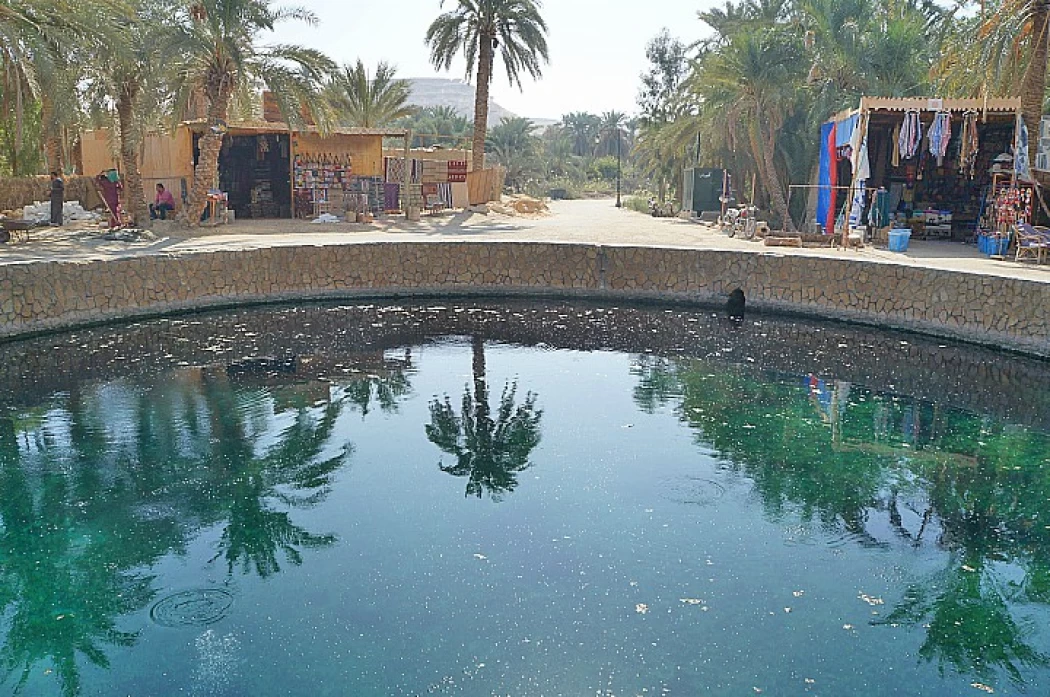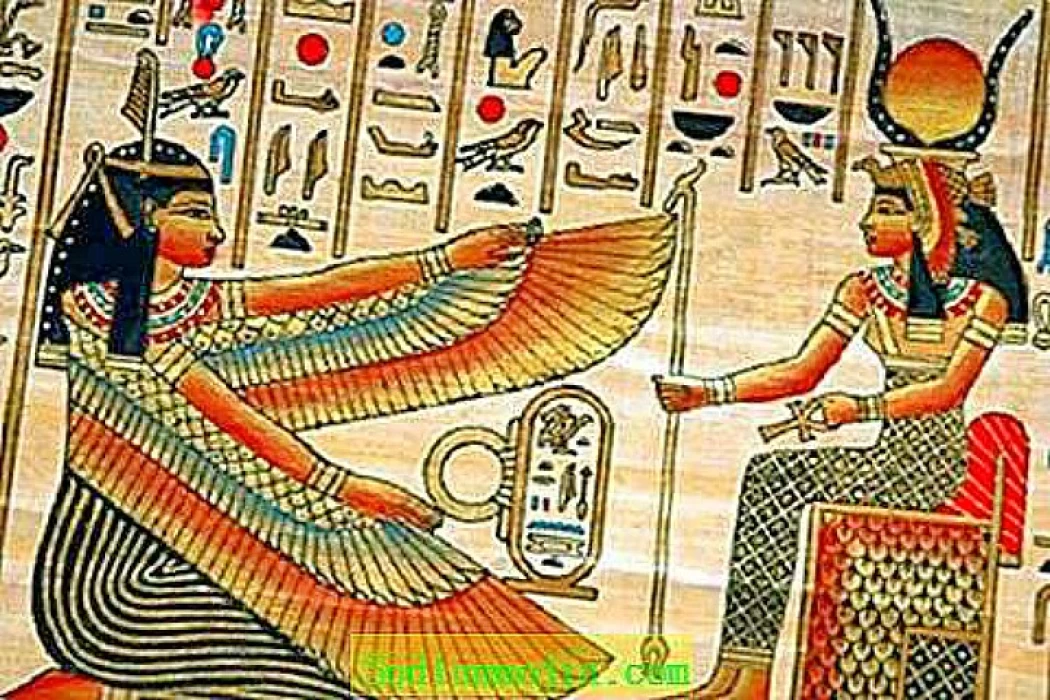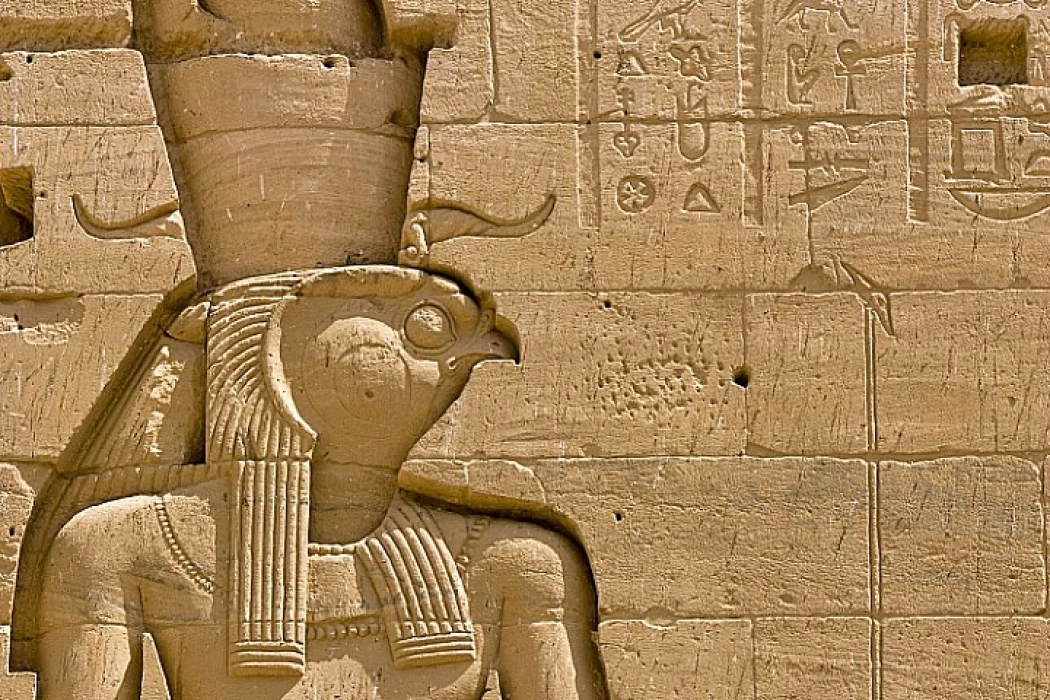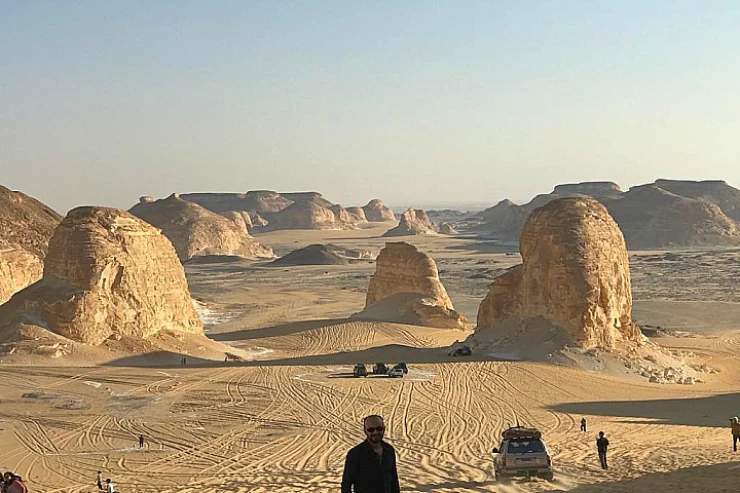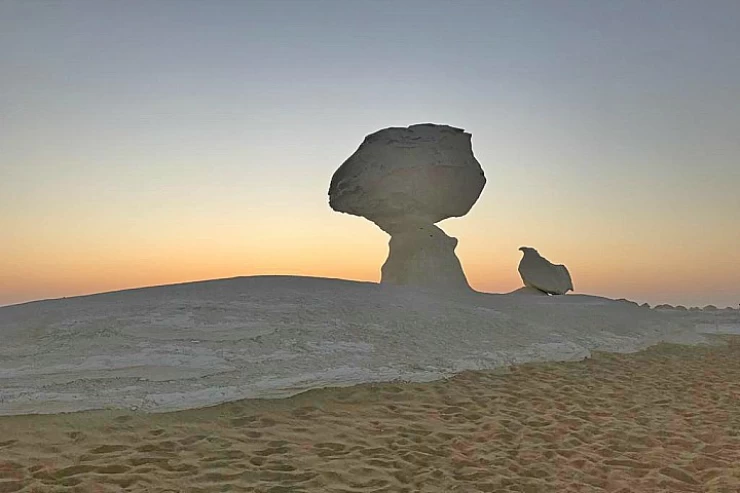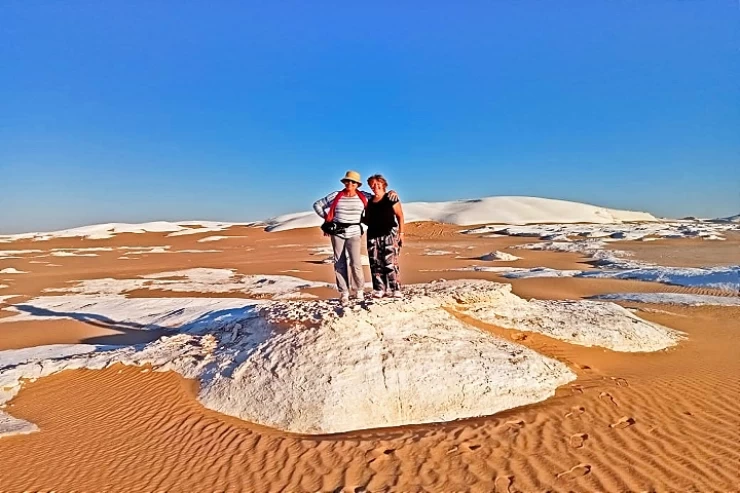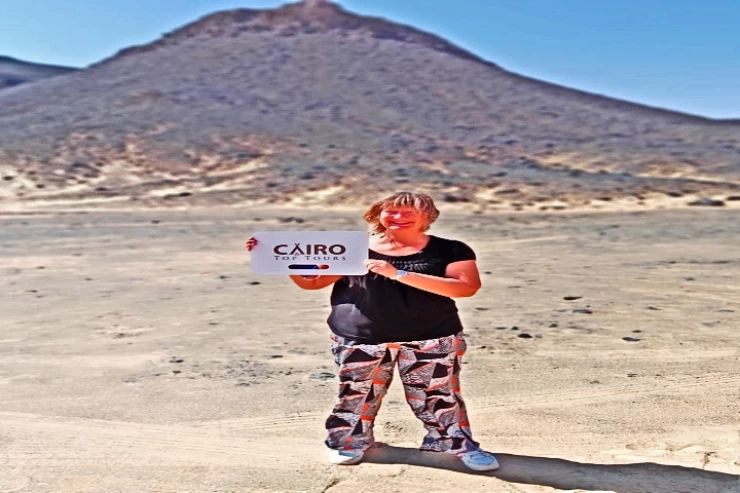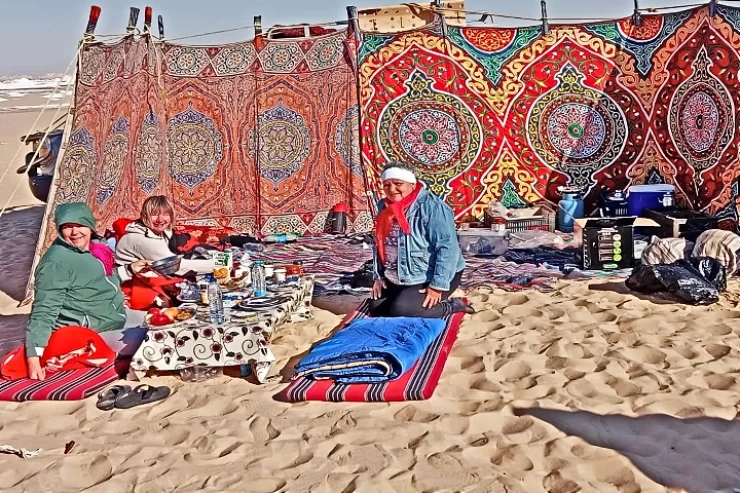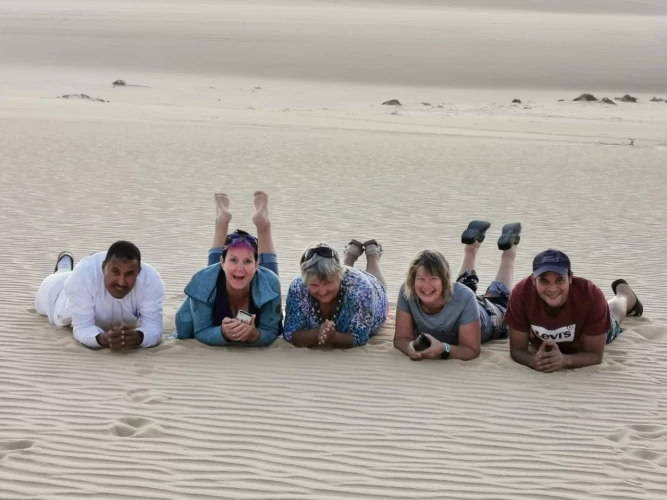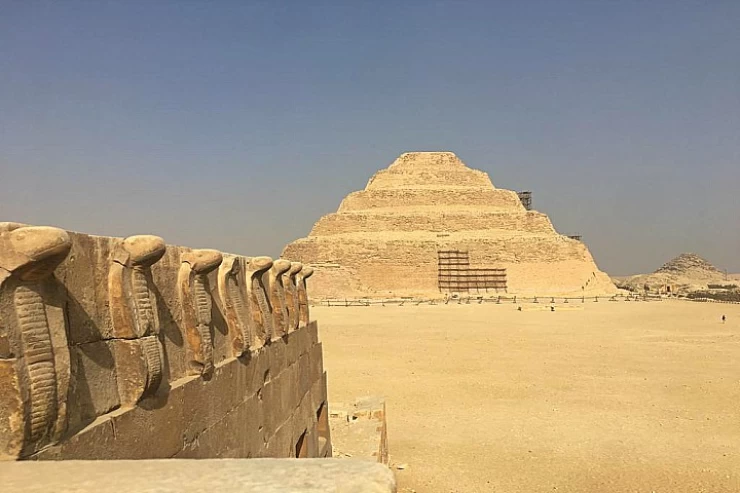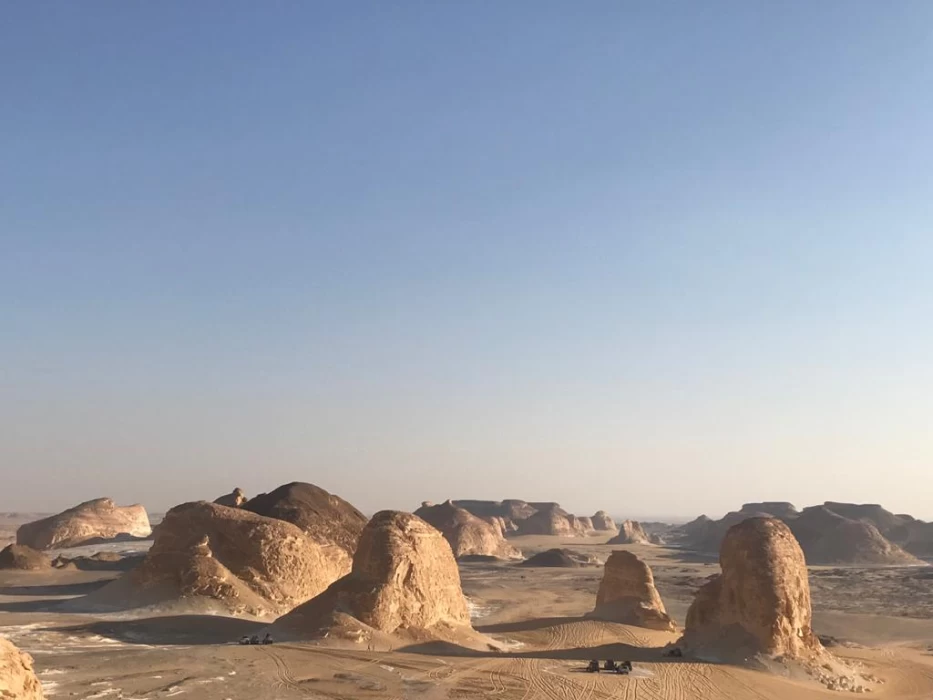
Bahariya Oasis in Egypt
Bahariya Oases in Egypt
The Bahariya Oasis is one of nine rich oases in Egypt's Western Desert. Fertile oases filled with palm trees, dates, olives, grapes, water springs, underground wells, sulfurous water, mountain ranges, and dunes, about 365 kilometers southwest of Giza from Cairo, and was known in the Egyptian language and texts as “Jasgis” and mentioned in Arabic sources as “Wah al-Bahnsa,” considering that the village of Al-Bahnsa, one of the villages of Minya Governorate in central Upper Egypt, was located at the head of the road that connects the Bahariya Oasis to the Nile Valley.
It is located on a depression with an area of more than 2000 square meters, the center of which is the city of Al-Bawiti, and includes a large number of archaeological sites and witnesses; although it is in the heart of the desert, it is rich in water wealth, with 400 springs for warm and cold mineral and sulfur water.
The ancient Egyptians were interested in the Egyptian Sea oases, and the Romans came after them due to the enormous agricultural potential that provided decent livelihoods for them. This region became a breadbasket for the pharaohs and Romans for long periods, and a large number of tombs and temples were discovered in it.
Bahariya Oasis Artifacts
The Bahariya Oasis has a large number of tombs, cemeteries, temples, and distinct monuments, such as the Sawi era tombs in the Sheikh Sobi area, the Qara Qasr Salim area, the Ain al-Muftila cemeteries, the Temple of Alexander the Great, the only temple for him in all of Egypt until now, the Temple of the God Bess, the Valley of the Golden Mummies, and a number of Greek, Roman, Coptic, and Islamic monuments.
Temples in the Bahariya Oasis
The temple consists of a number of chambers that may have been used for festivals, and it is from this temple that the largest sandstone statue of the god has been recovered and is now in the Egyptian Museum in Cairo.
The Temple of Alexander the Great is the only temple dedicated to the Macedonian leader in Egypt to date. Its walls depict Alexander the Great making offerings to the god Amun, one of the most important Egyptian gods worshipped in the Bahariya Oases during the Greco-Roman era, and the construction of this temple is in commemoration of the passage of Alexander the Great in Bahariya on his way to the Temple of Revelation in Siwa Oasis.
Uniqueness of tombs
The tomb of Amenhotep Hawi is one of the oldest tombs of the Bahariya Oasis, and the tombs of the Bahariya Oasis were dug in the local sandstone, and the nature of the region was the reason for the uniqueness of these tombs, as they were characterized by their rooms with vaulted ceilings, and the tombs often consist of a hall with columns and very small rooms in their corners, and the tombs of the Bahariya Oasis date from the Late Period to the Sawi period, and all the tombs of the Twenty-Sixth Dynasty in the Bahariya Oasis have columned hall entrances. With the exception of the tomb of Amun's grandfather Euf Ankh, the columns of his tomb are round and have peaks in the shape of a papyrus flower, and the other tombs have square columns with scenes depicting gods, with vaulted ceilings covered with stucco and colored, and the tombs of the Twenty-sixth Dynasty in the Bahariya Oases can be divided into two sections: the tombs of Qara Qasr Salim is a small hill surrounding the city of Al-Bawiti, and this height resulted from the accumulated debris over the ages. At the top of the hill are two of the most important tombs of the Twenty-Sixth Dynasty, the tombs of Amun's grandfather Iphankh and his son Panentiu.
Valley of the Golden Mummies
It is considered one of the most important archaeological discoveries of the twentieth century at kilometer 6 of the Bahariya-Farafra road. The discovery amazed the whole world from the moment of its discovery until now and shed light on an important period of Egypt's history at the beginning of the Roman era, and the valley contains a huge number of golden mummies, and the discovered mummies date back to the first and second centuries AD, when Egypt was under Roman rule, and these discovered mummies show the continuity of the Egyptian religion during this period despite the Greek and Roman beliefs in medicine. The discovered mummies show the continuity of the Egyptian religion in this period despite the presence of Greek and Roman beliefs of the ruling class, which in turn was influenced by the ancient Egyptian religion, and most of these discovered mummies have gilded masks and chests and are decorated with hieroglyphic inscriptions and religious drawings.
Medical Tourism in Bahariya Oasis
With the increase in interest in natural treatment methods in Egypt and the world, the Egyptian Bahariya Oases topped the most important therapeutic areas that many patients resort to, especially rheumatism and skin diseases, whether they are Egyptians, Arabs, or foreigners, due to the great fame that the Bahariya Oases have gained in this field, and the dry summer and winter weather of the Bahariya Oases plays a big role in the global fame that the oases are known for as one of the most important natural treatment areas in the world, especially in the central and western regions of Europe. The global fame of oases is known as one of the most important natural treatment areas in the world, especially in the regions of central and western Europe, due to the presence of a large number of hot and cold sulfur wells, which were exploited by the people and officials to support the activity of medical tourism in the Bahariya Oasis, as many hotels and motels were established around these wells.
The eyes of Bir Hakima are considered one of the most important warm wells from which sulfurous water flows, which is used in the treatment of many diseases, as the water temperature reaches about 65 degrees Celsius, and there are more than ten wells in different locations, such as Ain Al-Halafa well in Al-Bawiti and some eyes in the village of Al-Qasr and Mandisha, and the number of natural eyes in the oases is about 398. This makes the future of physiotherapy operations in the oases strongly compete with other places in Egypt, such as Safaga and Qusair, for many reasons, foremost of which are the cheap prices of the services provided in the Bahariya Oases compared to other places, which represents an element of attraction for Egyptians and thus revitalizes domestic tourism, as well as the proximity of the oases to the capital, Cairo.
Latest Articles
Admin
Wadi El Rayan in Faiyum | Waterfalls in Wadi El Rayan
Wadi Al-Rayan Nature Reserve is one of the distinguished tourist areas in Fayoum Governorate, and one of the most important areas is the picturesque Wadi Al-Rayan Falls with its charming nature, which made it a destination for hundreds of thousands of tourists from different countries of the world who visit it during the year and enjoy practicing various tourist activities around the waterfalls, such as sand skiing, bird watching, and others.
Admin
Tourism in Aswan | Aswan Tourism in Egypt
Aswan Governorate has a huge wealth of diverse natural attractions, including the great Nile River, a large number of nature reserves, vast areas of deserts and mountains, and other areas of attractive nature. It is also characterized by an ancient, unique, rich and diverse civilization, as it possesses a civilizational and cultural heritage that bears witness to all the periods of history that have succeeded in it during thousands of years.
Admin
The Medical Tourism in Egypt | Therapeutic Tourism Egypt
If you are planning medical tourism in Egypt and you don't know what medical tourism places you can visit, let me tell you, dear reader, about places rich in natural resources that provide effective treatments to get rid of diseases and get the most energy and vitality.
Admin
The Nile River information
The Nile River is the longest river in the world and is located in the continent of Africa, and it divides the land of Egypt from south to north to branch into two branches that flow into the Mediterranean Sea, namely the Rosetta Branch and the Damietta Branch, its length is from its headwaters in Lake Tanganyika to its mouth in the Mediterranean Sea
Admin
Goddess Isis | The Egyptian Goddess Isis
In the first millennium BCE, Isis and Osiris became the most worshipped Egyptian deities, and Isis took on many of the traits of the other gods. The rulers of Egypt and its neighbors to the south in Nubia began building temples specifically dedicated to Isis, and her temple at Philae was one of the most important religious centres for Egyptians and Nubians alike.
Admin
God Amun Ra | Amon Ra The Master of the Ancient Egyptian gods
By merging with Ra, Amun manifested himself in creation, thereby combining in himself the two divine opposites: as Amun, he was invisible, mysterious, and detached from the world, and as Ra, he was visible and the giver of everyday life. Similarly, he was associated with Maat, the Egyptian concept of justice and balance in the universe.
